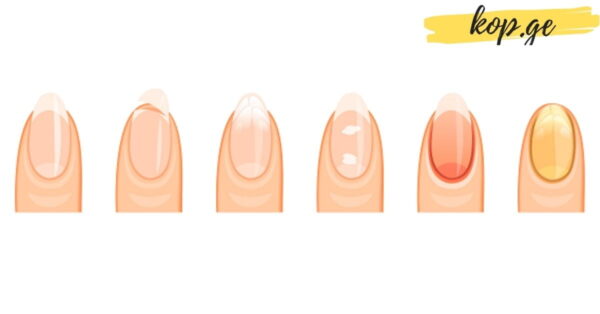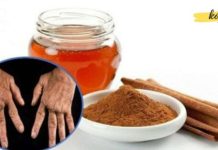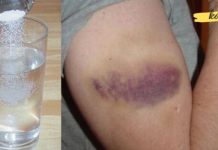What Do Your Nails Say About Your Health?

Most people only begin to pay attention to their nails when something goes visibly wrong — brittleness, breakage, discoloration. But your nails can be a powerful mirror reflecting your internal health. From vitamin deficiencies to serious systemic conditions, the appearance of your nails can offer early clues that something in your body might be off balance.
Healthy nails are typically smooth, evenly colored in light pink or rosy tones, and have a slight natural shine. When nails start to look different — whether they become discolored, ridged, brittle, or unusually shaped — it may be your body’s way of signaling physical stress or underlying health problems.
Let’s explore what different nail signs can tell you about your health.
1. White Spots on the Nails
White spots or small patches that appear on the nails are often misunderstood. Contrary to popular belief, they are not always a sign of trauma. More commonly, they may indicate a zinc or calcium deficiency. If you notice these, try incorporating more mineral-rich foods into your diet such as pine nuts, beans, Parmesan cheese, and parsley.
2. Brittle or Fragile Nails
If your nails break easily, peel, or split, this may point to iron deficiency, commonly associated with anemia. Low iron levels affect the body’s ability to produce healthy red blood cells, reducing oxygen supply to tissues — including your nails. Add more green vegetables, red meat, apples, and egg yolks to support healthy nail growth.
3. Discoloration
Pale nails may be a sign of anemia or poor blood circulation.
Yellow nails can indicate liver problems, jaundice, or even a fungal infection. Prolonged use of dark nail polish without a base coat can also stain your nails yellow.
Blue or purplish nails might signal cardiovascular issues or low oxygen levels in the blood, and they may be associated with conditions like congestive heart failure or chronic respiratory illnesses.
4. Split Nail Tips (Onychoschizia)
Split or frayed nail tips — especially when they consistently occur on one side (e.g., only on the left or right hand) — may suggest ovarian dysfunction. In holistic medicine, this type of nail symptom has been loosely associated with reproductive system imbalances, particularly when other symptoms (like hormonal irregularities) are also present.
5. Heart-Related Issues
Thin red or brown vertical lines under the nail (called splinter hemorrhages) may be early indicators of infective endocarditis — an infection of the heart’s valves. Additionally, nails that appear with a bluish or purplish tint might reflect poor oxygen circulation, often linked with heart or lung conditions. In either case, professional medical evaluation is critical.
6. Oxygen Deficiency
Bluish nails can also be a red flag for oxygen deprivation in the body. This may occur in people with emphysema, pneumonia, asthma, or other respiratory issues. Sometimes, it’s a symptom of low hemoglobin levels. If your nails change color along with symptoms like shortness of breath, fatigue, or dizziness, consult your healthcare provider and request a complete blood count (CBC) test.
7. Stress and Nervous Fatigue
Ideally, the surface of your nails should be smooth and even. When you begin to notice ridges, waves, or changes in nail texture, it may be a sign of chronic stress or nervous exhaustion. These lines (known as Beau’s lines) may appear after illness, shock, or a stressful life event.
Other habits — like nail biting or picking at the skin around the nails — can also be indicators of anxiety or emotional distress. If you find yourself frequently engaging in these behaviors, consider seeking help from a therapist or counselor. Your mental health plays a vital role in your overall well-being — and your nails may be revealing more than you realize.
8. Thyroid Disorders
Dry, brittle, cracking, or uneven nails may point toward problems with the thyroid gland. In particular, hypothyroidism (underactive thyroid) can slow down your body’s metabolic processes, affecting nail growth and strength.
On the other hand, spoon-shaped nails — where the nail curves inward like a spoon — may indicate iron-deficiency anemia or hyperthyroidism. If you suspect your thyroid is involved, speak to your doctor about testing your TSH, T3, and T4 hormone levels.
9. Infection or Fungal Issues
If the skin around your nails is red, swollen, or painful, it may suggest a bacterial or fungal infection. An inflamed cuticle area — known as paronychia — often develops after small injuries or poor manicure practices.
These infections can lead to pus, discoloration, and even detachment of the nail if not treated early. Risk factors include nail trauma, artificial nails, or frequent handwashing without moisturizing. Treatment often involves topical or oral antifungal/antibacterial medications. It’s essential to maintain good hygiene: always use clean tools, avoid sharing nail clippers, and regularly disinfect them with soap and alcohol.
How to Keep Your Nails Healthy
Maintaining healthy nails involves both external care and internal balance. Here are a few quick tips:
Eat a balanced diet rich in vitamins A, B7 (biotin), C, D, E, as well as iron, zinc, and protein.
Stay hydrated — dry nails are more prone to breakage.
Use gloves while cleaning or working with chemicals.
Moisturize your hands and cuticles daily.
Avoid overuse of nail polish remover, especially those containing acetone.
Give your nails time to breathe — take polish breaks.
Don’t bite your nails or cuticles.
Final Thoughts
Your nails aren’t just for aesthetics — they’re subtle indicators of your internal health. Discoloration, ridges, brittleness, and inflammation can all signal that something deeper is going on in your body.
Next time you glance at your hands, don’t just check for chipped polish. Ask yourself: What are my nails trying to tell me? Listening to these signals might be the first step in catching a health issue early — or preventing one altogether.













